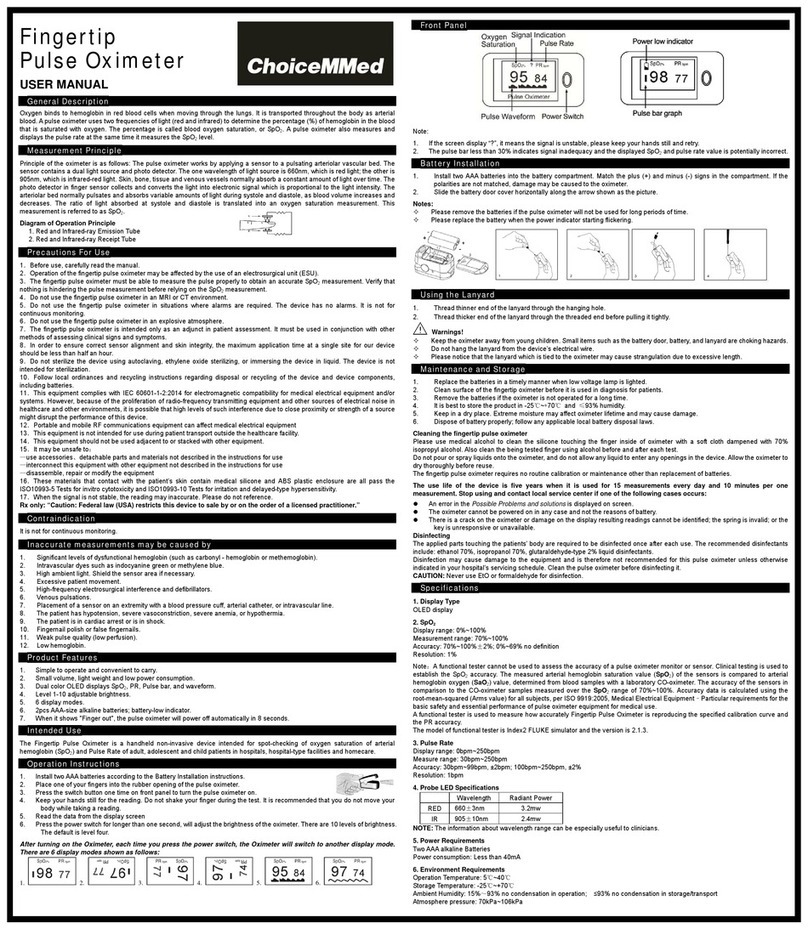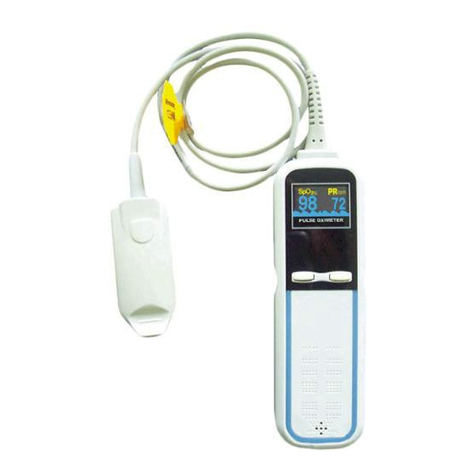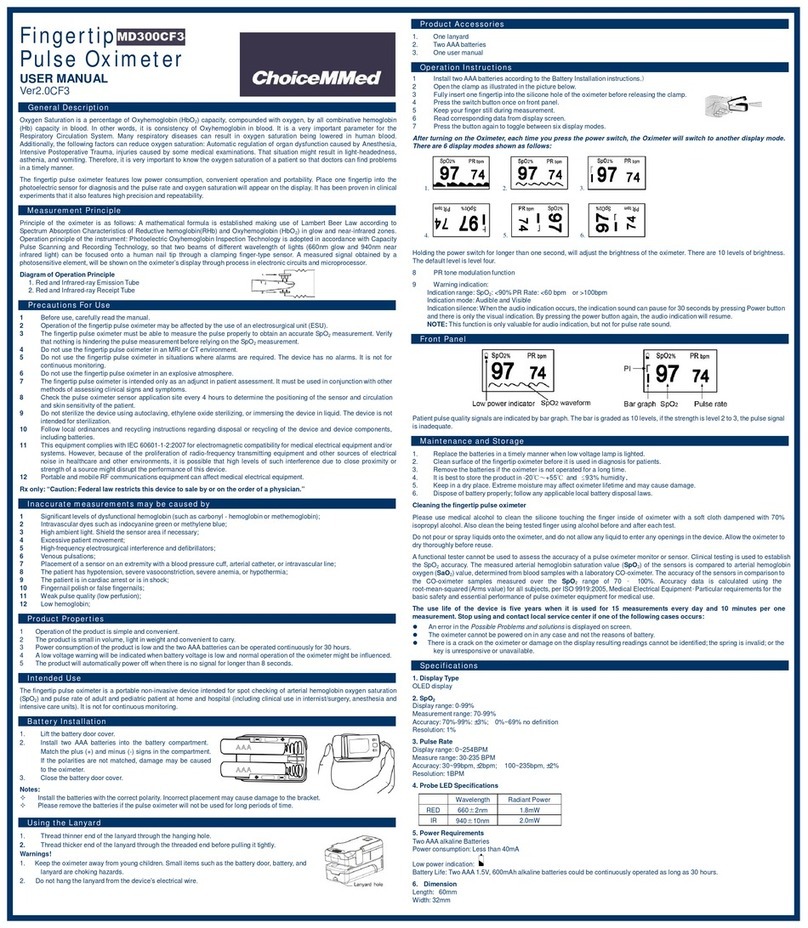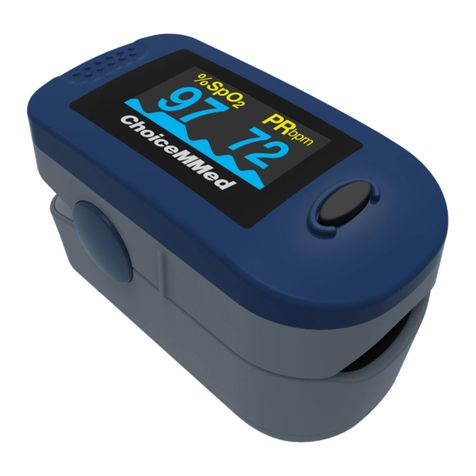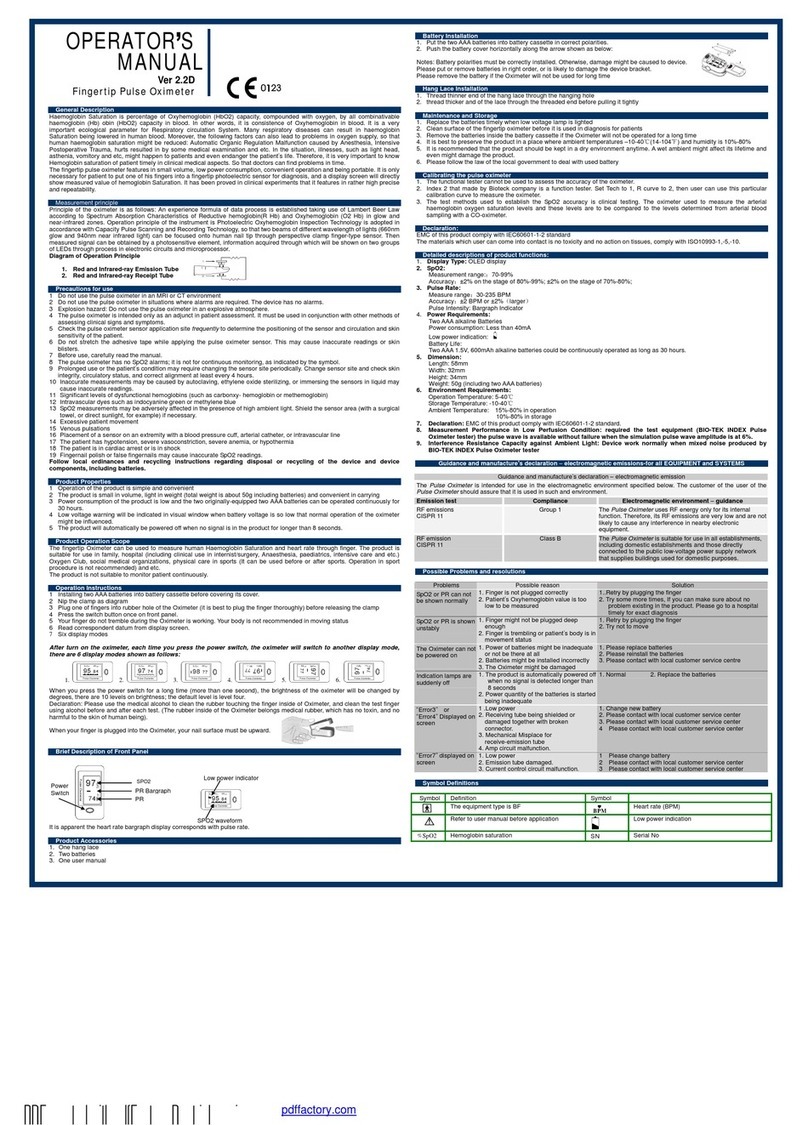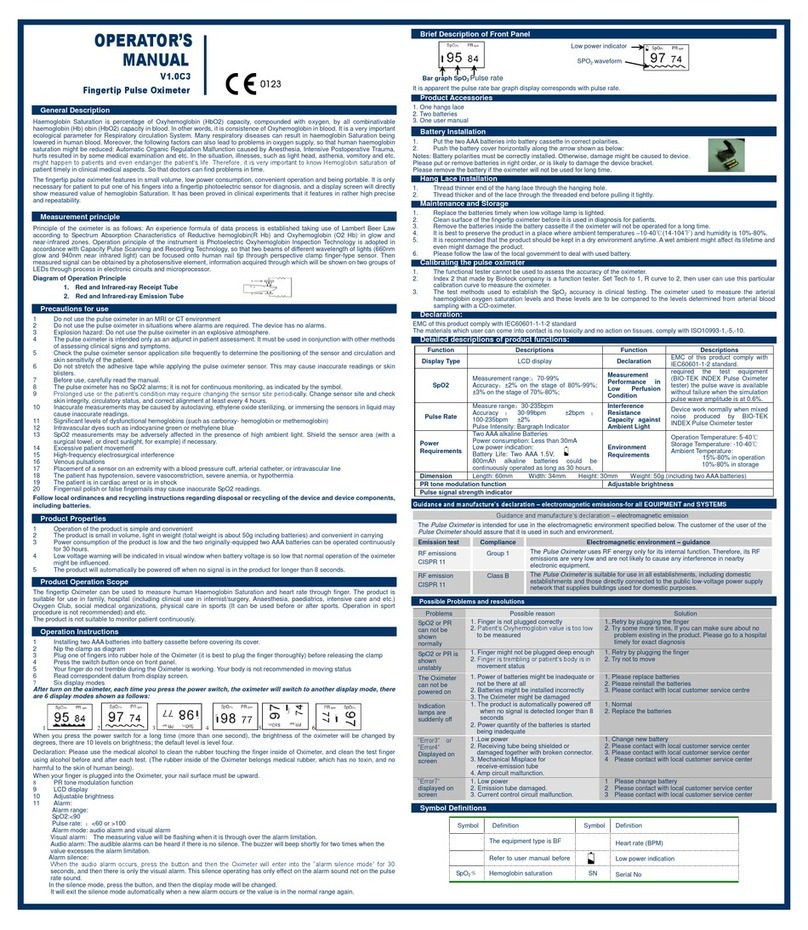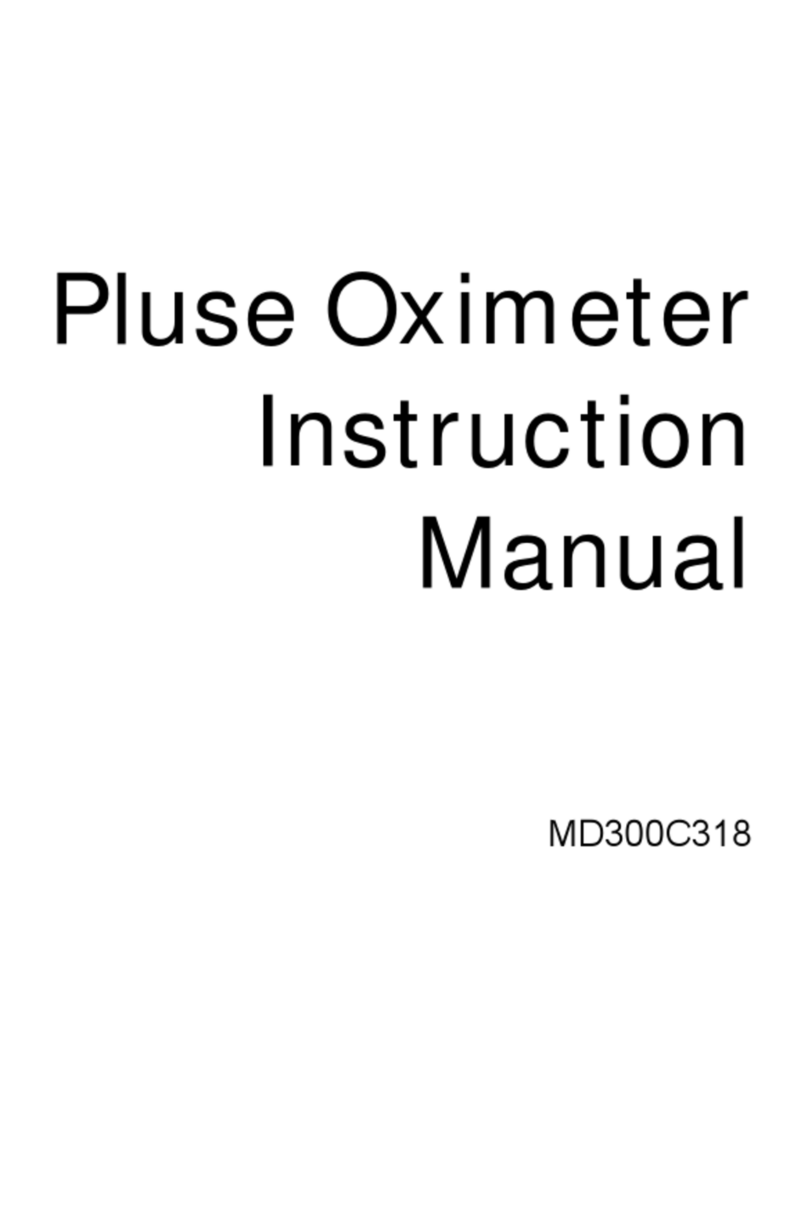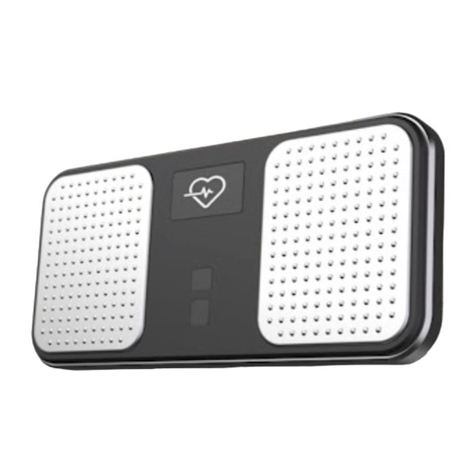V1.0M122 PULSEOXIMETEROPERATOR'SMANUAL
5
zApplication of this device may influence the measuring accuracy in the background of
electromagnetic areas such as electro-surgery environment.
zSpO2measurements may be adversely affected in the presence of high ambient light.
Shield the probe area (with a surgical towel, for example) if necessary.
zDyes introduced into the bloodstream, such as methylene blue, indocyanine green,
indigo carmine, and fluorescein, may adversely affect the accuracy of the SpO2
reading.
zAny condition that restricts blood flow, such as use of a blood pressure cuff or extremes
in systemic vascular resistance, may cause a failure to determine accurate pulse rate
and SpO2readings.
zRemove fingernail polish or artificial fingernails before applying SpO2probes.
Fingernail polish or artificial fingernails may lead to inaccurate SpO2readings.
zHazards arising from software errors have been minimized. Hazard analysis conforms
to meet ISO14971: 2000 and EN60601-1-4: 1996. Significant levels of dysfunctional
hemoglogins, such as carboxyhemoglogin or methhemoglobin, will spawn an affection
of the accuracy of the SpO2measurement.
zOptical cross-talk can occur when two or more probes are located in adjoining area. It
can be eliminated by covering each site with opaque material. Optical cross-talk may
adversely affect the accuracy of the SpO2readings.
zObstructions or dirt on the probe’s red light or detector may cause a probe failure. Make
sure there are no obstructions and the probe is clean.
zThe AC adapter and accessories used with the device should be complied with the
requirement of IEC60601-1.
zFor routine equipment maintenance, please refer to the service procedures at the
associated section as indicated in the manual.
zAs to the other concerns for attention, please carefully look through the specific chapter
in this instruction.
1.3 Electromagnetism Interference
This oximeter is designed and tested in compliance with the EMC standard, complying
with the international standard for the EMC of the electronic medical device - IEC
60601-1-2. However, because of the proliferation of radio frequency transmitting
equipment and other sources of electrical noise in the health-care and home environments
(e.g. cellular phones, mobile two-way radios, electrical appliances), it is possible that high
levels of such interference due to close proximity or strength of a source, may result in
disruption of performance of this device.

